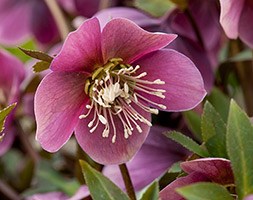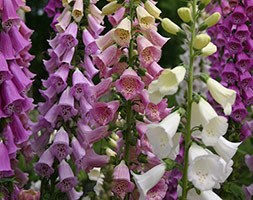Price reductions at Crocus
by Sarah - March 22nd, 2015.Filed under: Crocus, Price Reductions.
Crocus has cut the price of these items
Helleborus purpurascens (hellebore) was £9.99 now £4.99
Position: partial shade Soil: heavy, neutral to alkaline soil Rate of growth: average Flowering period: December to March Hardiness: fully hardy Often the first flowers can be seen low to the ground in December (usually before the new foliage appears), but they continue to open as the red-spotted stems grow, right through until early spring. A variable but very pretty deciduous clump-forming perennial that makes excellent groundcover in partial shade. Garden care: Keep well watered during dry spells and provide shelter from icy winds. When planting out, add lots of well-rotted leaf mould or organic matter to the planting hole. Apply a generous 5-7cm (2-3in) mulch of well-rotted organic matter around the base of the plant in autumn and provide a top-dressing of general fertiliser each spring.
Digitalis purpurea ‘Excelsior Group’ (foxglove) was £9.99 now £7.49
Position:full sun to partial shade Soil: moist, humus-rich soil Rate of growth: average to fast-growing Flowering period: May to July Flower colour: purple, pink, creamy-yellow or white Hardiness: fully hardy Tall spires of large, well-spaced, tubular flowers in soft shades of purple, pink, creamy-yellow or white, each one with throats spotted maroon or purple appear from May to July. These pastel-coloured foxgloves are perfect for the back of a large cottage-style border. Although short-lived, given the right conditions they will perpetuate by self-seeding. Garden care: Ensure that the soil is kept moist in summer. After flowering cut back the flowered spikes to encourage more sideshoots. Cut down to the ground after flowering. Apply a generous 5-7cm (2-3in) mulch of well-ro tted organic matter around the plant in early spring. These plants are mainly biennial, although they will produce plenty of new sideshoots and self-seed freely.








